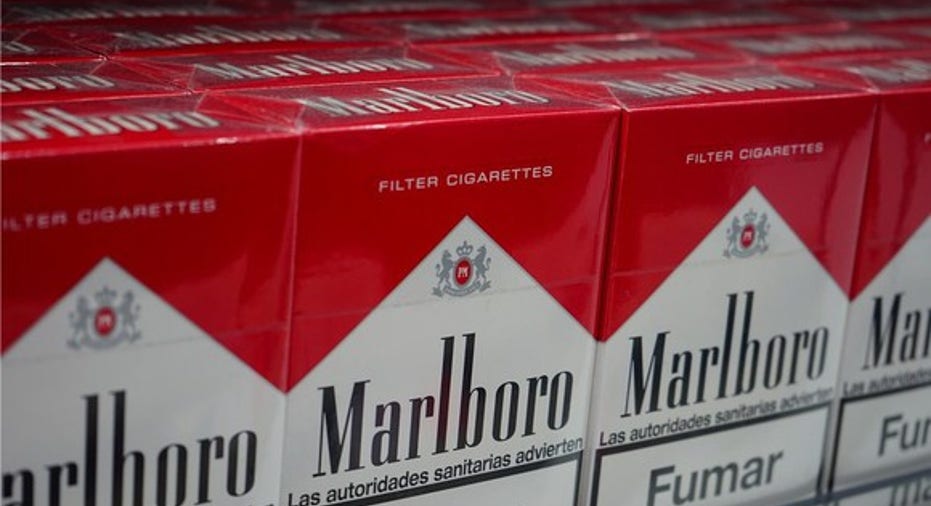Better Buy: Procter & Gamble Co. vs. Philip Morris International Inc.

Procter & Gamble (NYSE: PG) and Philip Morris International (NYSE: PM) are both consumer staples heavyweights that usually hold up well during market downturns. Investors often buy both stocks for income and stability instead of growth -- but is either stock a smarter long-term play than the other? Let's examine their core businesses, growth trajectories, headwinds, dividends, and valuations to find out.
What do P&G and Philip Morris International do?
P&G's massive consumer staples portfolio includes common household names like Tide, Bounty, Pampers, Crest, Charmin, Gillette, Pringles, Pantene, and SK-II. It runs its business in five segments -- beauty, grooming, healthcare, fabric/home care, and baby/feminine/family care products.
Image source: Pixabay.
Philip Morris International was spun off of Altria (NYSE: MO)backin 2008. Following that split, PMI sold all of the Philip Morris brands (led by Marlboro) in overseas markets, and Altria became a purely domestic tobacco company. That split enabled PMI to expand in faster-growth overseas markets with higher smoking rates, and allowed Altria to tackle domestic litigation and declining smoking rates.
How fast are P&G and PMI growing?
Wall Street expects P&G's revenue tostay flat this year before rising just 2% to $66.8 billion next year. PMI's revenue (which excludes excise taxes) is expected to rise 6% this year and 9% to$30.8 billion next year.
Both companies have been hurt by currency fluctuations over the past few years, so analysts generally look at their currency-neutral growth when assessing their growth. On an organic basis (which excludes the impacts of forex, acquisitions, and divestments), P&G expects its revenue torise 2% to 3% this year. After excluding excise taxes, acquisitions, and currency impacts, PMI expects itsrevenue to grow 4% to 6% this year.
On the bottom line, P&G's earnings are expected to grow 5% this year and 7% next year, as buybacks will offset its lackluster top line growth. On an organic basis, "core" earnings are expected to grow in the "mid-single" digits.
PMI's earnings are expected to rise 9% this year and 11% next year -- or 9% to 12% after excluding taxes, acquisitions, and currency impacts -- but the company isn't relying on buybacks at all due to the strong dollar. Instead, it's consistently hiking prices and cutting costs to boost its earnings.
Understanding the headwinds
P&G is often criticized for being over-diversified, as the growth of its stronger brands (like SK-II) is often offset by lagging ones, with currency impacts exacerbating the pain. Last quarter, P&G's reported revenues fell annually across all segments except healthcare. On an organic basis, healthcare revenues rose 6%, grooming revenues dropped 6%, and the other three segments all posted just 1% growth.
Image source: P&G.
P&G is trying to streamline that portfolio with big divestments. It dropped about 100 brands in 2014 and sold its Vicks VapoSteam business to Helen of Troyin 2015. Last year, P&G sold 43 beauty brands to Coty and transferred its Duracell brand to Berkshire Hathaway.
Meanwhile, PMI faces declining cigarette shipments, which plunged 11.5% annually last quarter. That decline can be partly attributed to waning smoking rates and tougher anti-smoking laws in key growth markets like Indonesia. PMI believes that new non-cigarette products like its IQOS "heatsticks" might eventually offset those declines, but those products still generate a tiny percentage of PMI's revenue.
PMI is still thelargest publicly traded tobacco company in the world, but it will be eclipsed by British American Tobacco (NYSEMKT: BTI) once its takeover of Reynolds American (NYSE: RAI) closes. That big move has fueled ongoing speculation that PMI willbuy Altria to recombine the two halves of Philip Morris to counter British American.
The dividends and valuations
P&G currently pays a forward yield of 3.1%, which is supported by a payout ratio of 77%. It's hiked that dividend annually for sixty consecutive years. PMI pays a higher forward yield of 3.8%, but it also has a higher payout ratio of 92%. The tobacco giant has hiked that dividend every year ever since it split with Altria.
P&G currently trades at 26 times earnings, which is much higher than its industry average of 20. PMI has a P/E of 25, which is also higher than its industry average of 15.
Both stocks' prices and multiples were likely inflated by lower interest rates, which sent income investors flocking to blue chip dividend stocks over the past few years. But as interest rates rise, that trend could reverse and cause both stocks to drop to more reasonable multiples.
The winner: Philip Morris International
I'm not a big fan of either stock due to their high valuations and rising higher interest rates, but PMI's simpler business model, higher growth rates, softer currency impacts, and beefier dividends all make it a better consumer staples play than P&G. That being said, it might be wise for investors to wait for PMI to significantly pull back before starting a new position.
10 stocks we like better than Procter & GambleWhen investing geniuses David and Tom Gardner have a stock tip, it can pay to listen. After all, the newsletter they have run for over a decade, Motley Fool Stock Advisor, has tripled the market.*
David and Tom just revealed what they believe are the 10 best stocks for investors to buy right now... and Procter & Gamble wasn't one of them! That's right -- they think these 10 stocks are even better buys.
Click here to learn about these picks!
*Stock Advisor returns as of April 3, 2017
Leo Sun has no position in any stocks mentioned. The Motley Fool owns shares of and recommends Berkshire Hathaway (B shares). The Motley Fool has a disclosure policy.



















